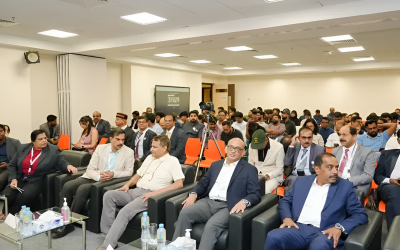Smart Infrastructure Project of the Year
HOW DO I ENTER?
Visit our 'How to Enter' page for our Items Checklist & Step-by-Step Guide. CLICK HERE.
Once you have created your PDF submission and you have all items in the Items Checklist, submit your entry via the Online Entry Form. CLICK HERE.
This award recognises an outstanding infrastructure project that leverages smart technologies, data-driven solutions, or innovative design to deliver improved performance, sustainability, and user outcomes. The judges will be looking for projects that demonstrate the integration of digital tools, intelligent systems, or connected technologies to create a future-ready infrastructure. Entry is by a 5 A4 page submission; the judges will be looking for clear information, backed up by evidence, that pays particular attention to the criteria listed below.
- Project Overview: Provide a concise summary of the project, including its purpose, location, timeline, stakeholders, and overall budget. Outline the objectives and the specific infrastructure challenges it sought to address.
- Smart Technology Integration: Describe how smart technologies or data-driven systems were incorporated into the design, delivery, or ongoing operation of the project. This may include IoT, digital twins, sensor networks, automation, AI, real-time monitoring, or predictive analytics.
- Innovation & Design Excellence: Highlight any innovative engineering approaches, tools, or processes used. Explain how these contributed to better decision-making, enhanced performance, or future adaptability of the infrastructure.
- Collaboration & Stakeholder Engagement: Explain how collaboration across disciplines, public or private stakeholders, or community groups contributed to the success of the project. Detail how insights were gathered and incorporated into the planning or implementation stages.
- Impact & Outcomes: Demonstrate how the project has delivered tangible benefits such as improved efficiency, safety, sustainability, resilience, cost-effectiveness, or quality of life for users. Include data or performance metrics where possible.
- Sustainability & Future-Proofing: Describe how the project supports environmental goals or climate resilience. Outline how the infrastructure is designed to be adaptable, scalable, and sustainable over its lifecycle.





.png)

